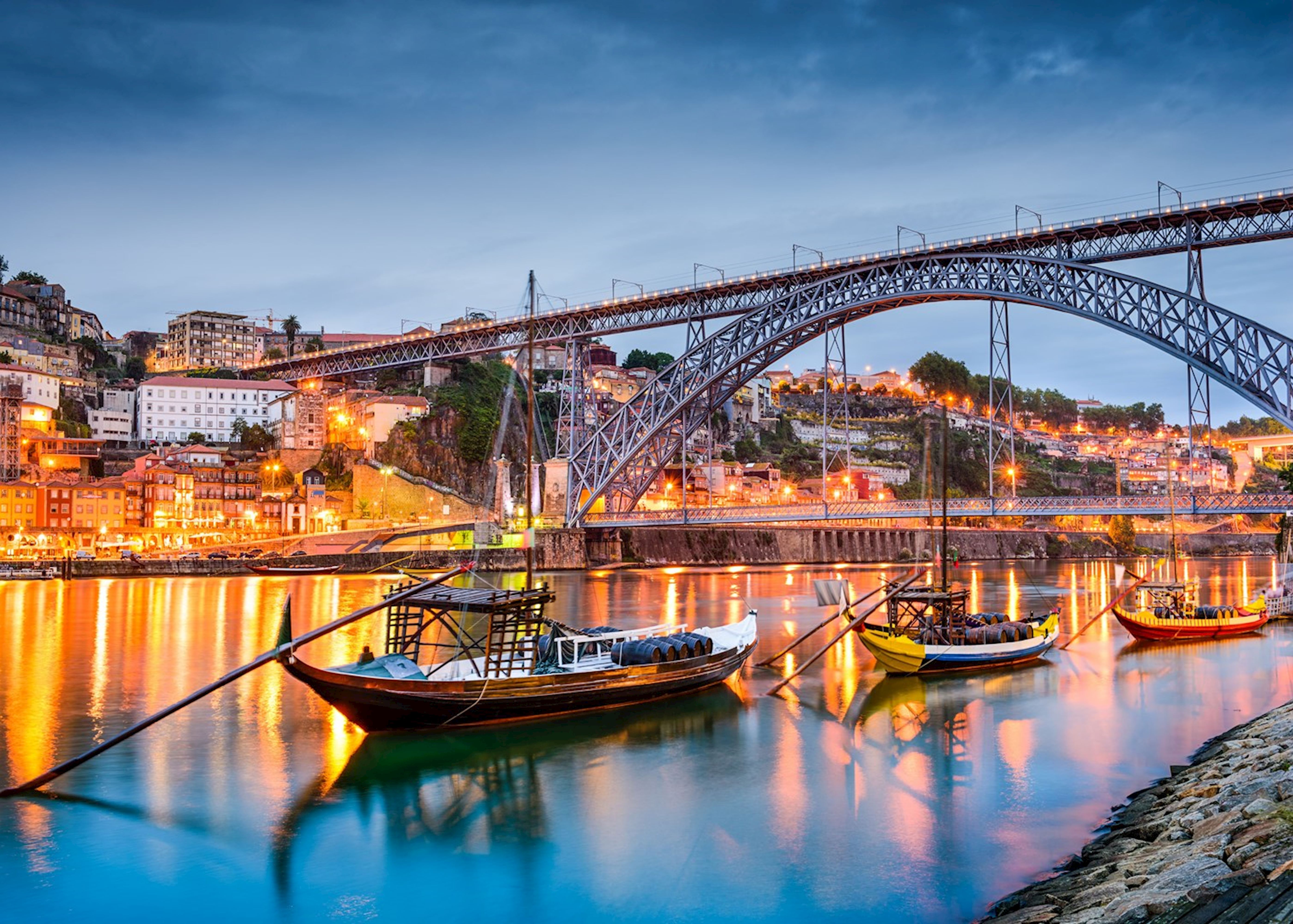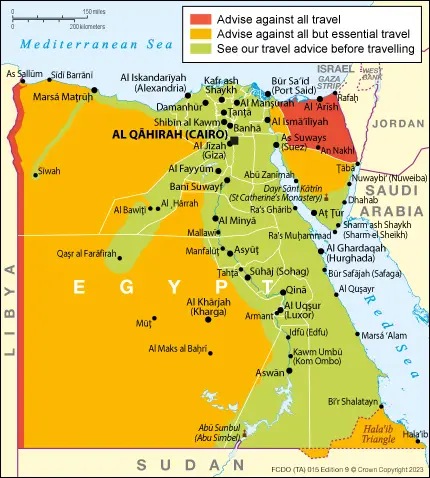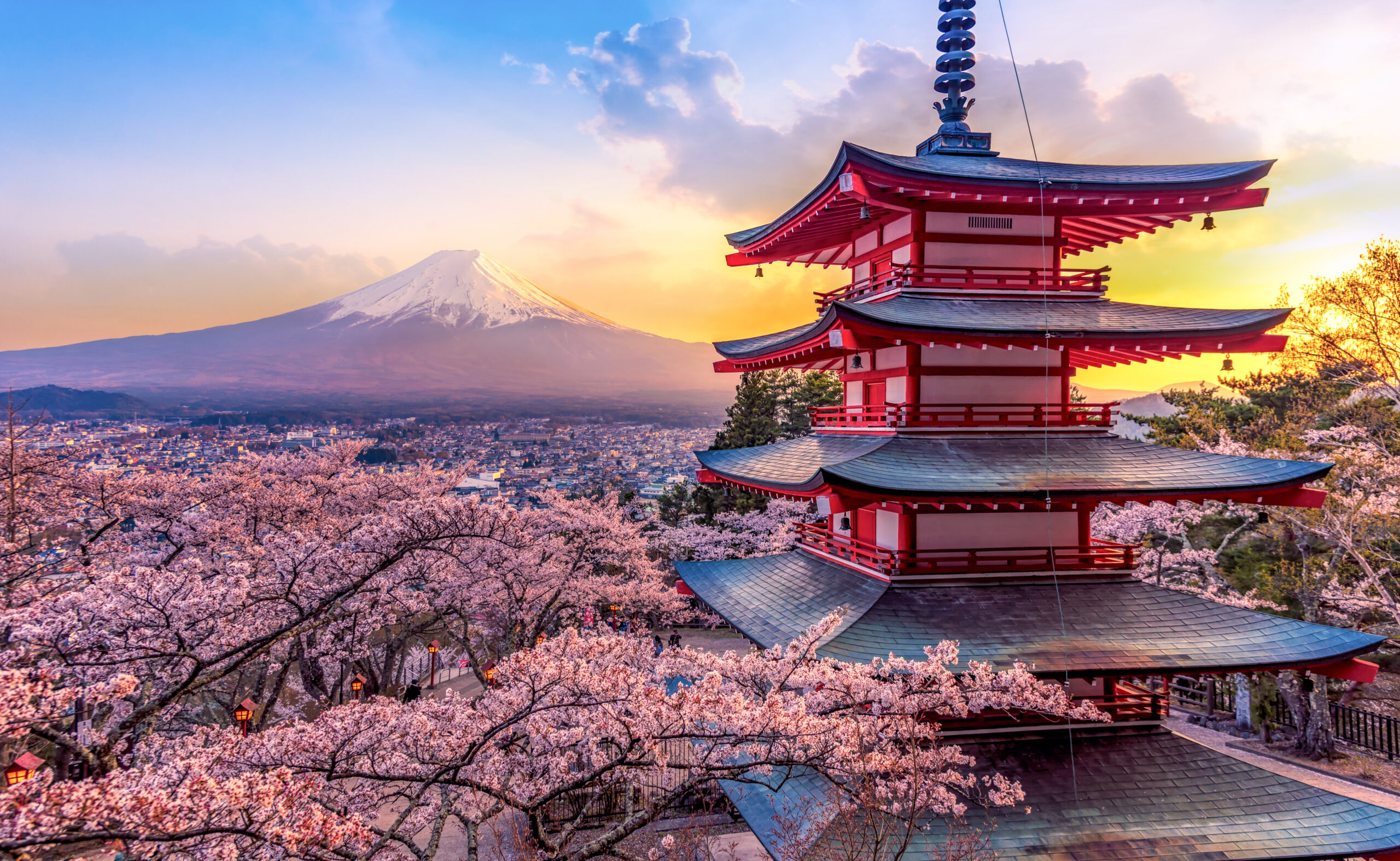The best time to travel to Portugal is during the spring (March to May) and fall (September to October). These seasons offer mild weather and fewer crowds.
Portugal, a country rich in culture and history, offers diverse experiences for travelers. Spring and fall are ideal for visiting, as the weather is pleasant and attractions are less crowded. During these periods, you can explore Portugal’s stunning landscapes, historic sites, and vibrant cities without the peak season rush.
The temperate climate makes outdoor activities enjoyable, from hiking in the Douro Valley to strolling through Lisbon’s charming neighborhoods. Additionally, accommodation and flight prices are often more reasonable compared to the summer months. By choosing spring or fall for your trip, you ensure a more relaxed and enriching travel experience in Portugal.

Credit: www.audleytravel.com
Introduction To Portugal’s Charm
Portugal, with its vibrant culture and stunning landscapes, is a dream destination for travelers. Nestled in Southern Europe, it offers a delightful mix of ancient history, modern attractions, and natural beauty. Each season in Portugal brings its own unique charm, making it a year-round destination.
Embracing The Culture
Portugal’s culture is a blend of traditions, music, and cuisine. Fado music is a must-experience, echoing the soul of the nation. The Portuguese are known for their hospitality and warmth, making every visitor feel at home.
The country celebrates numerous festivals throughout the year. Carnival in February and Sao Joao in June are among the most famous. These festivals showcase traditional dances, music, and food, offering a glimpse into the local way of life.
Portuguese cuisine is diverse and flavorful. Enjoy pastel de nata, a delicious custard tart, and fresh seafood dishes like bacalhau. The food scene in Portugal is a gastronomic delight for any traveler.
Diverse Landscapes
Portugal boasts a variety of landscapes that cater to every type of traveler. From stunning beaches to rolling hills, the country’s geography is diverse and breathtaking.
| Region | Highlights |
|---|---|
| Algarve | Golden beaches, rugged cliffs, and charming fishing villages |
| Douro Valley | Vineyards, river cruises, and terraced hills |
| Sintra | Fairytale palaces, lush forests, and historical sites |
| Lisbon | Historical neighborhoods, vibrant nightlife, and scenic viewpoints |
Each region has its own unique charm and attractions. The Algarve is perfect for beach lovers. The Douro Valley is ideal for wine enthusiasts. Sintra is a haven for history buffs, and Lisbon offers a mix of modern and traditional experiences.
Portugal’s landscapes are not just beautiful but also diverse, offering a plethora of activities. You can hike, surf, or simply relax and enjoy the stunning views. No matter your preference, Portugal has something to offer.
Weather Patterns Across Portugal
Portugal is a beautiful country with diverse weather patterns. The climate can vary significantly between regions. Understanding these variations can help you plan the perfect trip. Let’s explore the weather patterns across Portugal.
Coastal Climates
The coastal areas of Portugal enjoy a mild maritime climate. Winters are mild and summers are warm. The Atlantic Ocean influences the temperatures, making them moderate.
Here is a quick overview of the average temperatures along the coast:
| Month | Average High (°C) | Average Low (°C) |
|---|---|---|
| January | 14 | 8 |
| July | 25 | 17 |
Rainfall is more frequent in the winter months, especially in the north. The summer months are usually dry and sunny, perfect for beach activities.
Inland Variations
Inland regions of Portugal experience more extreme temperatures. Summers can be very hot and winters can be quite cold. This is especially true in the interior regions.
Here are some average temperatures for inland Portugal:
| Month | Average High (°C) | Average Low (°C) |
|---|---|---|
| January | 10 | 2 |
| July | 30 | 16 |
Rainfall in these regions is less frequent. The summers are often dry and winters can bring occasional snow in higher altitudes.
To summarize, the coast offers mild and moderate weather while inland areas have more extreme temperatures. Knowing these patterns helps you choose the best time to visit different parts of Portugal.
Peak Season Perks And Drawbacks
Portugal is a popular travel destination, especially during the peak season. This time offers many benefits but also some downsides. Let’s explore the highlights and challenges of visiting Portugal during the peak season.
Summer Festivities
Summer in Portugal is full of exciting events and festivals. You can experience the famous Lisbon Sardine Festival in June. There is also the Porto Wine Festival in September.
These festivals offer a chance to enjoy traditional music, dance, and food. You can mingle with locals and other tourists. The atmosphere is lively and vibrant. Don’t miss the colorful parades and street performances.
| Festival | Month | Location |
|---|---|---|
| Lisbon Sardine Festival | June | Lisbon |
| Porto Wine Festival | September | Porto |
Tourist Crowds
Peak season means large crowds. Tourist spots are often packed. It can be hard to find a quiet place. Popular attractions may have long lines.
- Expect crowded beaches and busy streets.
- Book accommodations well in advance.
- Try visiting lesser-known destinations.
Prices for flights and hotels are usually higher during peak season. If you plan ahead, you can find some deals. But, flexibility helps in finding the best prices.
Despite the crowds and higher costs, the peak season offers a chance to experience Portugal at its liveliest. The warm weather and festive atmosphere make it a special time to visit.
Shoulder Season Advantages
Traveling to Portugal during the shoulder season offers many benefits. This period, typically in spring and fall, provides a perfect balance of advantages. You can enjoy the country’s beauty without the peak season crowds. The weather is mild, making outdoor activities pleasant. Let’s explore these advantages in detail.
Mild Weather
The shoulder season in Portugal is known for its mild weather. During spring and fall, temperatures are comfortable. You can expect daytime temperatures between 15°C and 22°C (59°F to 72°F). This makes it ideal for exploring cities, beaches, and countryside.
In the spring, flowers bloom and landscapes are green. Fall offers a golden hue with harvest festivals. Portugal’s weather during these times is perfect for walking tours, hiking, and sightseeing. You won’t face the extreme heat of summer or the cold of winter.
Smaller Crowds
Another key advantage of traveling during the shoulder season is the smaller crowds. Popular tourist spots like Lisbon, Porto, and the Algarve are less crowded. You can explore at a leisurely pace without long lines or packed spaces.
With fewer tourists, you can experience local culture more authentically. Restaurants, markets, and attractions are more accessible. This allows for a more relaxed and enjoyable visit. Additionally, it means better opportunities for photography without the hassle of crowded backgrounds.
| Shoulder Season | Advantages |
|---|---|
| Weather | Mild temperatures, perfect for outdoor activities |
| Crowds | Fewer tourists, easier access to attractions |
Traveling during the shoulder season ensures a more pleasant and stress-free experience. Enjoy Portugal’s beauty and culture at its best.
Exploring Portugal During Off-peak Times
Traveling to Portugal during off-peak times offers unique experiences. Avoid large crowds and enjoy the country’s rich culture. The off-peak seasons provide a more relaxed and intimate travel experience.
Winter Wonders
Winter in Portugal is mild compared to other European countries. It’s a perfect time to explore without the summer heat. Lisbon and Porto have temperatures averaging 10°C to 15°C. Enjoy the cities’ charm with fewer tourists.
Winter brings unique experiences. Visit the magical Christmas markets in Lisbon. Taste the traditional Bolo Rei (King Cake) and warm up with Ginjinha, a local cherry liquor.
Head to the Algarve region for stunning coastal views. The winter sea is still beautiful, and the beaches are peaceful. Walk along the cliffs and enjoy the quiet beauty of the ocean.
Cost-effective Travel
Traveling during off-peak times is more affordable. Flights and accommodations are cheaper compared to the summer months. Save money while still enjoying everything Portugal has to offer.
Many attractions offer discounts during the off-season. Museums, historic sites, and local tours often have lower prices. This allows you to explore more without breaking the bank.
Restaurants are less crowded. Enjoy a leisurely meal without waiting for a table. Taste the famous Pastel de Nata (custard tart) and other local delicacies at your own pace.
The following table highlights the cost differences between peak and off-peak seasons:
| Expense | Peak Season | Off-Peak Season |
|---|---|---|
| Flight (Round Trip) | $800 | $500 |
| Hotel (Per Night) | $150 | $90 |
| Museum Entry | $20 | $15 |
Traveling during off-peak times means less stress and more savings. Enjoy Portugal in a more relaxed and affordable way.

Credit: www.autoeurope.com
Regional Events And Festivals
Portugal is a country with vibrant events and festivals. These celebrations offer unique experiences. Plan your visit around these events to make the most of your trip.
North To South Celebrations
Portugal’s regions have distinct traditions and festivals. From the lively streets of Porto to the sunny beaches of Algarve, each area has something special.
In the north, Porto’s São João Festival is a must-see. It happens in June and features fireworks, music, and street parties. Everyone enjoys this celebration.
Central Portugal is famous for the Festa de São Mateus in Viseu. This event occurs in September and includes music, food, and traditional activities. It’s a great way to experience local culture.
In the south, the Algarve hosts the Festival do Marisco in August. This seafood festival attracts food lovers from all over. Enjoy fresh seafood and live music by the sea.
Timing Your Visit For Events
Plan your visit to coincide with these events for a memorable experience.
| Region | Event | Month |
|---|---|---|
| North | São João Festival | June |
| Central | Festa de São Mateus | September |
| South | Festival do Marisco | August |
Each event offers a unique insight into Portuguese culture. Make sure to check the dates and plan accordingly.
Insider Tips For Smart Travel
Planning a trip to Portugal? Knowing the best time to travel can make your experience unforgettable. With a mix of stunning landscapes, rich history, and vibrant culture, Portugal offers something for everyone. Here are some insider tips to help you travel smart and make the most of your visit.
Booking Strategies
Book flights early to get the best deals. Airlines often offer lower prices if you book months in advance. Consider flying mid-week as tickets are usually cheaper on Tuesdays and Wednesdays.
Use comparison websites to find the best accommodation deals. Sites like Booking.com and Airbnb offer a wide range of options to suit every budget. Flexible dates can help you find cheaper stays.
Look for package deals that include flights, hotels, and sometimes even car rentals. These can save you both time and money.
Local Advice
Visit during shoulder seasons like spring (March to May) and fall (September to November). The weather is pleasant, and there are fewer tourists.
Explore local markets for fresh produce and unique souvenirs. Places like Mercado da Ribeira in Lisbon offer a taste of local life.
Learn basic Portuguese phrases to make your interactions smoother. Simple words like “Olá” (Hello) and “Obrigado” (Thank you) can go a long way.
Use public transportation to get around. It’s efficient and much cheaper than taxis. Trains and buses connect major cities and tourist spots.
Respect local customs and traditions. Dress modestly when visiting religious sites and be polite to locals.

Credit: www.theblondeabroad.com
Hidden Gems And Secret Spots
Portugal offers more than just popular tourist spots. The country hides many beautiful and quiet places. Discovering these hidden gems can make your trip special and unique.
Undiscovered Beaches
Portugal has many undiscovered beaches that are perfect for those seeking peace. These beaches are often less crowded and offer stunning views.
One such hidden gem is Praia da Ursa. This beach is near Sintra and is known for its unique rock formations.
Another secret spot is Praia de Odeceixe. It is located in the Algarve region and is ideal for surfers and nature lovers.
Rural Escapes
Portugal’s countryside is full of charming rural escapes. These spots are perfect for those who want to experience local culture and traditions.
One such place is Monchique. This small town is known for its thermal springs and beautiful landscapes.
Another rural escape is Castelo de Vide. This village has cobblestone streets and historic buildings. It offers a glimpse into Portugal’s rich history.
| Hidden Gem | Location | Highlights |
|---|---|---|
| Praia da Ursa | Near Sintra | Unique rock formations |
| Praia de Odeceixe | Algarve | Surfing, nature |
| Monchique | Algarve | Thermal springs, landscapes |
| Castelo de Vide | Alentejo | Historic buildings, culture |
Exploring these hidden gems can make your trip to Portugal unforgettable. Whether you prefer beaches or countryside, there is something for everyone.
Traveling Sustainably In Portugal
Traveling sustainably in Portugal is a rewarding experience. It allows you to enjoy the country’s beauty while preserving its environment. By adopting eco-friendly practices and supporting local communities, you can make a positive impact. This guide will help you understand how to travel sustainably in Portugal.
Eco-friendly Practices
Portugal is committed to sustainability, and there are many ways to travel eco-friendly. Here are some tips:
- Use public transportation: Buses, trams, and trains are efficient and green.
- Walk or bike: Many cities have bike lanes and pedestrian paths.
- Stay in eco-friendly accommodations: Look for hotels with green certifications.
- Reduce plastic use: Carry a reusable water bottle and shopping bag.
- Respect nature: Stick to marked trails and do not disturb wildlife.
Supporting Local Communities
Supporting local communities is a key aspect of sustainable travel. Here are some ways to help:
- Shop at local markets: Buy fresh produce and handmade goods from local vendors.
- Eat at local restaurants: Enjoy traditional dishes and support local chefs.
- Hire local guides: They offer unique insights and help preserve cultural heritage.
- Attend local events: Festivals and fairs showcase the culture and traditions.
- Stay in family-run guesthouses: Experience authentic hospitality and contribute to the local economy.
By following these tips, you can make your trip to Portugal both enjoyable and sustainable. Happy travels!
Conclusion: Crafting Your Portuguese Itinerary
Planning a trip to Portugal can be exciting and overwhelming. Crafting the perfect itinerary involves balancing interests and leaving room for spontaneity. This guide will help you make the most out of your Portuguese adventure.
Balancing Interests
Portugal offers a wide range of attractions. From stunning beaches to historic landmarks, there’s something for everyone. Create a list of must-see places. Make sure to include famous spots like Lisbon and Porto.
Consider the interests of everyone in your travel group. Maybe someone loves hiking. Add a visit to the scenic trails in the Algarve. If someone enjoys history, include a trip to the ancient castles in Sintra.
Here’s a simple table to help you organize your activities:
| Activity | Location | Duration |
|---|---|---|
| Beach Day | Algarve | 1 Day |
| Castle Tour | Sintra | Half Day |
| Wine Tasting | Porto | 1 Day |
Leaving Room For Spontaneity
While planning is essential, leave some time for unplanned adventures. These moments often turn into the best memories.
Explore local markets or take a stroll through a quaint village. You might discover a hidden gem or a fantastic local eatery.
Here are a few tips to keep your itinerary flexible:
- Leave one day free every few days. Use this time to relax or explore something new.
- Keep travel distances short. This ensures you have more time to enjoy each place.
- Talk to locals. They can provide insider tips and recommend off-the-beaten-path spots.
By balancing interests and allowing for spontaneity, you can create a memorable and enjoyable trip to Portugal.
Frequently Asked Questions
What Is The Best Month To Go To Portugal?
The best month to visit Portugal is May. The weather is pleasant, and tourist crowds are smaller.
What Time Of Year Is Portugal Cheapest?
The cheapest time to visit Portugal is from November to February. During these months, flights and accommodations are more affordable.
What Months Are The Rainy Seasons In Portugal?
The rainy seasons in Portugal are typically from November to March. These months experience the highest rainfall.
What Is The Hottest Month In Portugal?
The hottest month in Portugal is usually August. Temperatures often reach their peak during this time.
Conclusion
Choosing the best time to travel to Portugal ensures an unforgettable experience. Spring and fall offer pleasant weather and fewer tourists. Summer is ideal for beach lovers, while winter provides a cozy, quiet retreat. No matter when you go, Portugal’s charm and beauty will captivate you.
Plan your trip wisely and enjoy all Portugal has to offer!















